(This is part two of a multi part article, in honor of the 19 year anniversary of Bash At The Beach 1996. To read part one of this series, click right here.)
The World Wrestling Federation of the early to mid 1990’s was vastly different from that of its World Championship Wrestling counterpart. WCW had not only aquired Hulk Hogan, once the flag bearer for the WWF, but they had also signed many of the Federation’s other seasoned wrestling veterans, like “Hacksaw” Jim Duggan, The Nasty Boys, Brutus “The Barber” Beefcake, Haku, Earthquake, and “Macho Man” Randy Savage, to name a few. Rapidly losing many of it’s established stars, the WWF began a “New Generation” campaign, focusing on turning younger talent into “Superstars,” like Shawn Michaels, Bret Hart, Owen Hart, the 1-2-3 Kid… and a mid-40’s Bob Backlund…
…we’ll come back to that in a second.
 One of the new stars that got main event opportunities right from his debut was the sly talking Cuban, Razor Ramon. Upon entering the WWF in late 1992, Ramon was thrown right into a feud with the likes of “Nature Boy” Ric Flair, Randy Savage, and the Ultimate Warrior (just months and in some cases, weeks, before all three would leave the Federation). By 1996, Razor Ramon’s “Bad Guy” persona had managed to turn him into one of the most popular individuals in the WWF, as well as a multi-time Intercontinental Champion.
One of the new stars that got main event opportunities right from his debut was the sly talking Cuban, Razor Ramon. Upon entering the WWF in late 1992, Ramon was thrown right into a feud with the likes of “Nature Boy” Ric Flair, Randy Savage, and the Ultimate Warrior (just months and in some cases, weeks, before all three would leave the Federation). By 1996, Razor Ramon’s “Bad Guy” persona had managed to turn him into one of the most popular individuals in the WWF, as well as a multi-time Intercontinental Champion.
Despite being 45 years of age, Bob Backlund managed to defeat Bret Hart at the 1994 WWF Survivor Series event, with a little help from a scheming Owen Hart. At first glance, this didn’t make sense, given that the Federation was so focused on developing younger stars. Within a matter of days, it was clear that Backlund had won the title specifically to drop it to an individual that Vince McMahon thought could carry his company through the “New Generation,” the seven foot tall Diesel.
 Debuting in mid-1993 as nothing more than Shawn Michaels bodyguard, Diesel quickly began competing in the ring, and within his first year in the WWF he managed to win all three major titles, including the Heavyweight Championship from Backlund in November, 1994. By 1996, though his one year championship reign didn’t do the big box office numbers that the company would have liked, Diesel, like Ramon, was one of the hottest commodities in the WWF, and the oppidimy of cool.
Debuting in mid-1993 as nothing more than Shawn Michaels bodyguard, Diesel quickly began competing in the ring, and within his first year in the WWF he managed to win all three major titles, including the Heavyweight Championship from Backlund in November, 1994. By 1996, though his one year championship reign didn’t do the big box office numbers that the company would have liked, Diesel, like Ramon, was one of the hottest commodities in the WWF, and the oppidimy of cool.
Hell, it can even be argued that Diesel had “Attitude” way before anyone else in the Federation, as he was flipping the bird to the likes of The Undertaker way back at the 1996 Royal Rumble!
Despite having the star power of Hulk Hogan, WCW wasn’t doing the numbers it should have been with him by 1996. Perhaps it can be argued that without the filter of WWF owner Vince McMahon, the ideas of The Hulkster seemed archaic and overly cartoony. That being said, WCW’s new Monday night program “Nitro” was giving “Raw” a run for it’s money in ratings by being strong in areas without Hogan, as not only were they delivering more ex-WWF stars like Lex Luger and Alundra Blayze, but they were utilizing international stars for their Cruiserweight division. The value of Hulk Hogan was quickly diminishing in WCW.
WCW President Eric Bischoff wanted bigger success for World Championship Wrestling, and once he knew that their contracts were expiring, Bischoff offered Hall and Nash first of it’s kind contracts, similar to that of Hulk Hogan’s: High dollars, limited dates, and creative control. It was too good of a deal to pass up. By May, 1996, Ramon and Diesel finished with the WWF at an untelevised event with the infamous “Curtain Call,” and headed for WCW.
In 1996, the internet was in it’s infancy. While it’s crazy to think about with the world we live in today, most people, had no clue that the WWF contracts of Scott “Razor Ramon” Hall and Kevin “Diesel” Nash had expired. That’s why it was such a shocker to see Razor walk out from the crowd and into the Nitro ring for the first time in 1996.
“You know who I am,” Hall said, “but you don’t– know why– I’m here.” Hall’s appearance on WCW television was intelligently designed to look as though World Wrestling Federation stars were about to begin invading WCW– and it was something fans bought into 100%.
Come back in soon to read part three! Who knows what might happen next (you know exactly what will happen).
-Greg



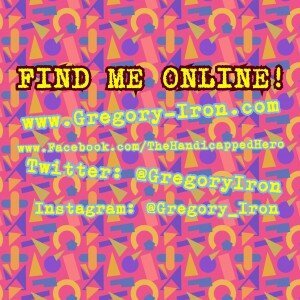




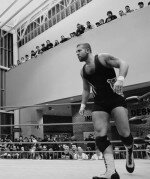

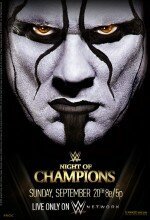

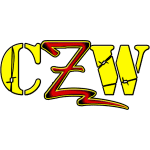
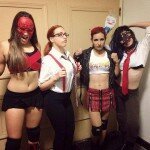





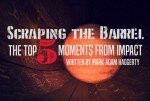

Pingback: CMLL Sabados De Coliseo Results - 7/11/15 - Daily Wrestling NewsDaily Wrestling News()
Pingback: Results: IPW:UK – Title Showdown 2015 – July 12th, 2015 – Tonbridge, England | www.Cheap-Heat.com:: WWE, TNA, ROH, NJPW and Other Blogs, Reviews, Top List, and More()
Pingback: Results: WRESTLE-1 (W-1) – Tour 2015 Symbol: Day 2 – July 12th, 2015 – Tokyo, Japan | www.Cheap-Heat.com:: WWE, TNA, ROH, NJPW and Other Blogs, Reviews, Top List, and More()
Pingback: IPW: UK's Title Showdown 2015 Results - 7/12/15 - Daily Wrestling NewsDaily Wrestling News()
Pingback: Results: New Japan Pro Wrestling (NJPW) – New Japan Alive 2015: Day 3 – July 12th, 2015 – Fukushima, Japan | www.Cheap-Heat.com:: WWE, TNA, ROH, NJPW and Other Blogs, Reviews, Top List, and More()
Pingback: NJPW's New Japan Alive 2015 - Day 3 Results - 7/12/15 - Daily Wrestling NewsDaily Wrestling News()
Pingback: Results: Dragon Gate – Rainbow Gate 2015: Final – July 12th, 2015 – Osaka, Japan | www.Cheap-Heat.com:: WWE, TNA, ROH, NJPW and Other Blogs, Reviews, Top List, and More()
Pingback: Dragon Gate's Rainbow Gate 2015 Final - 7/12/15 - Daily Wrestling NewsDaily Wrestling News()
Pingback: Results: Premiere Wrestling Xperience (PWX) – Superkick World – July 12th, 2015 – Concord, NC | www.Cheap-Heat.com:: WWE, TNA, ROH, NJPW and Other Blogs, Reviews, Top List, and More()
Pingback: PWX's Superkick World Results - 7/12/15 - Daily Wrestling NewsDaily Wrestling News()
Pingback: The Need For A Hostile Takeover (Part III): The Build-Up To Bash At The Beach 1996 | www.Cheap-Heat.com:: WWE, TNA, ROH, NJPW and Other Blogs, Reviews, Top List, and More()